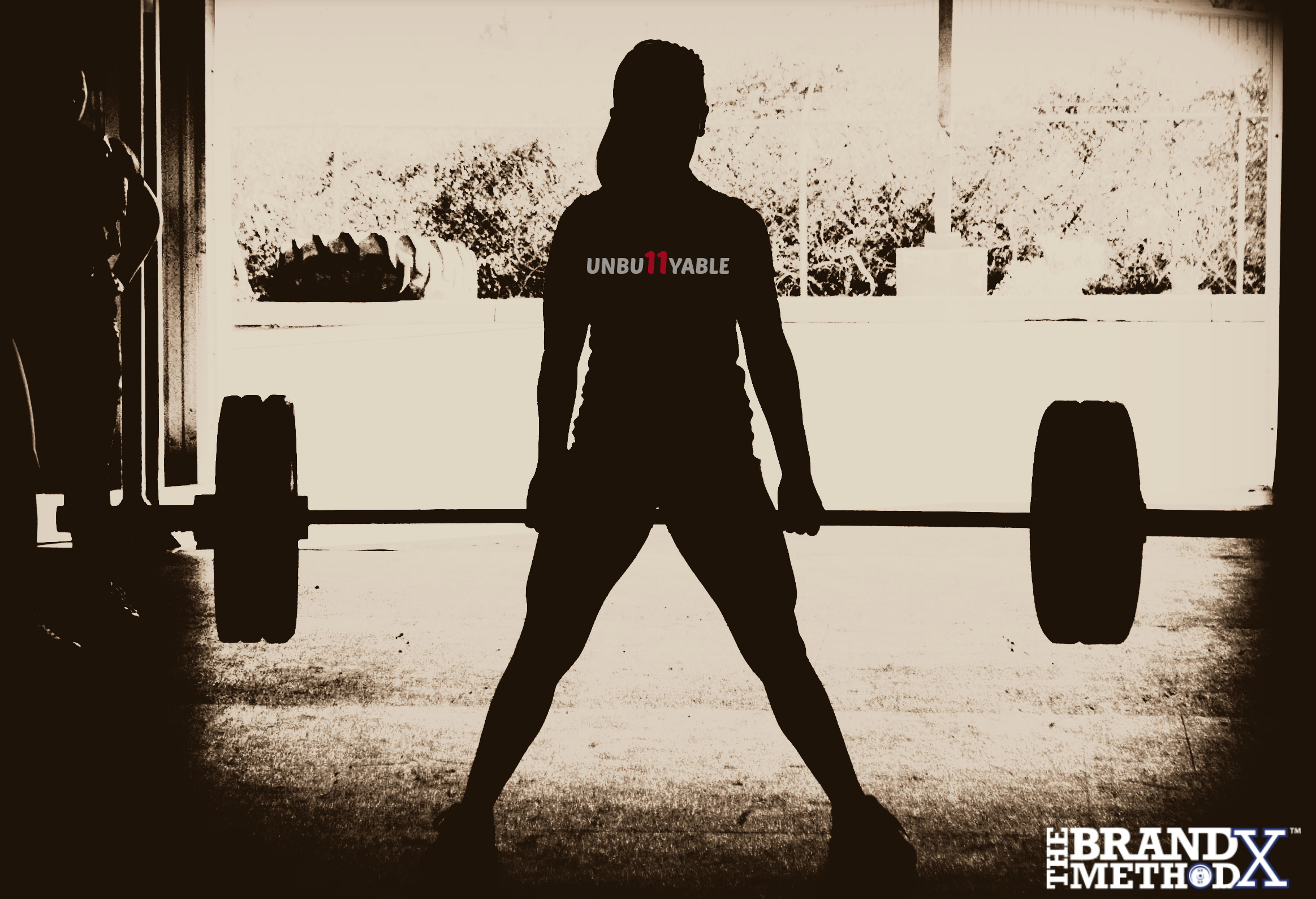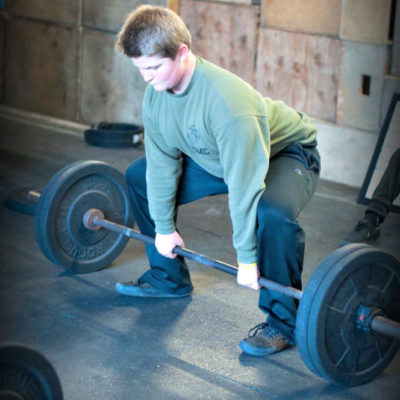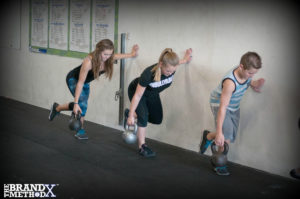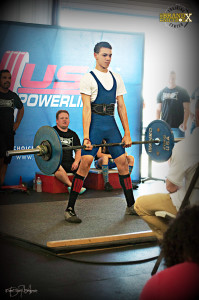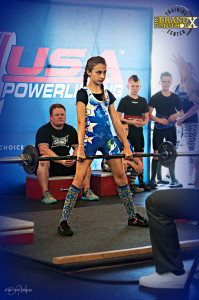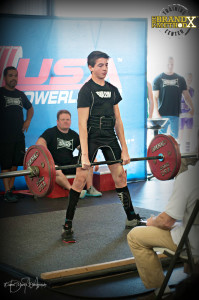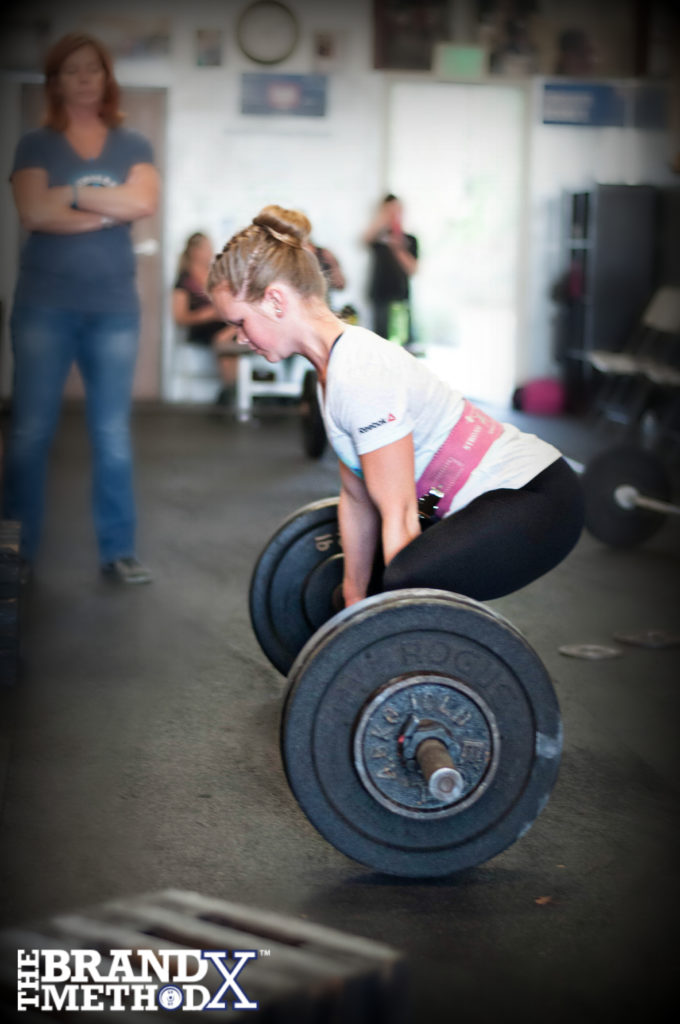Sumo Deadlift vs Conventional Deadlift? Why We Teach Our Kids to “Cheat” at Deadlift
Sumo is cheating.
We hear that a lot. Sometimes said with tongue in cheek, sometimes said with a bit of a sneer.
Well, we love it. The Brand X Method™ loves the sumo deadlift.
And we’re often asked about this great love affair.
So yeah, why sumo?
- When was the last time you set up in a conventional stance to pick up a cinder block, sack of dog food, a child? Never. The sumo stance is how we pick up stuff in the real world.
- Over the course of 15 years, we have found that kids can learn a safe sumo setup more quickly and maintain a neutral spine throughout the movement more consistently. Could it be because our bodies are designed to pick up heavy stuff in this position?
- The conventional stance requires more work from the spinal erectors (see, e.g., here). Should the erectors fatigue or fail under load—or be left holding the bag so to speak by primary mover fatigue or poor technique—the spine is at risk of injury. We train kids, which by definition means we’re training mostly beginner and intermediate lifters. The responsible approach is to minimize that risk.
- Powerlifting guru Louie Simmons has said that training wide supports narrow applications but not the opposite. At Brand X – The Lab, we’ve seen people improve their conventional deadlift after training exclusively sumo—but, yeah, you guessed it—not the opposite.
To say the sumo stance is functional is to lose its significance in all the buzz around that overused label. But it is functional. Profoundly so. The sumo stance is everywhere in the everyday world, from the backyard to the ball field, from the garage to the library.
When we train sumo, we enhance physical literacy, we improve our ability to engage with the environment. The more we are able to interact with the world and others around us in positive and rewarding ways, the healthier and happier we—and everyone around us—can be. Imagine a world like that. We do.
Never Say Never
So am I saying that we never train conventional?
Of course not. We program conventional deadlift variations all of the time for our experienced lifters:
- Single-leg dumbbell, deficits, rack pulls, RDLs… Conventional deadlifts make for great accessory and supplemental work.
- Some of our experienced kids are committed competitive powerlifters. Our sports-specific programming includes conventional deadlifts because it makes sense to identify which position the kid best pulls from. Is this a contradiction? No. We’re talking sport. We’re talking kids who want to lift the most weight possible. That doesn’t mean we simply let the kid pull conventional. A TBXM™ program for a kid who can stand up with more weight in the conventional stance than in the sumo position also includes exercises that support the conventional stance to ensure that safety and efficiency are maximized during training and competition.
- The conventional stance deadlift transfers to the power clean, a staple power-building exercise for The Brand X Method™. Let’s optimize.
- Occasionally anthropometry such as long femurs, long torso, and comparatively short arms call for us to explore a conventional stance for plateau-busting insights. Individualizing our program is essential to our mission.
Frankly, variation is a fairly conventional strength training principle. And therein lies one of the great things about The Brand X Method™—our principles are sound; they are long-established, evidence-based, and proven. With that kind of foundation, we can forever explore and evolve best practices for teaching kids how to move more safely and efficiently for fitness, sport, and life.
If You Ain’t Cheating You Ain’t Trying
The Brand X Method™ wrangles with the constant tension between the goals of youth sport and the goals of our athletic development program. The former wants high performance at all times (e.g., lifting the most weight, throwing the hardest, running the fastest), while we want to see the discovery, participation, and enjoyment of sport and other physical activities for all time.
Thing is, the tension seems to come from the sports side and is almost entirely driven by an overreliance on sports-specific training and a lack of knowledge about how our program should be viewed as essential to sports-specific training rather than some kind of extraneous “activity.” We know that high performance and lifelong physical activity based on consistently good movement don’t have to be mutually exclusive. Our proof is in the USA Powerlifting—California state record book where our kids and teens (and even some adults) hold more than 100 records. Imagine that—prioritizing safety and efficiency in the form of consistently excellent (and natural) movement yields record holders, champions, and national qualifiers, most of whom stepped onto the platform just for kicks.
High performance is a by-product of The Brand X Method™.
Sumo. What they call cheating, we call common sense. What they snicker at, we find advantageous.
Efficient.
Safe.
Long-term.
We want our kids able to lift when they’re 40 50, 60, beyond. A youth development program that is not thinking about lifetime fitness is not thinking period. We’ll continue to train the most efficient, safest movement built on naturally intended, functional motor patterns and positions. We’ll continue to encourage kids to try different sports and then provide them the best strength and conditioning we can to keep them strong, fast, and durable. We’ll continue to build formidable humans. We’ll continue to imagine a better future for our kids. And we’ll continue to gather the medals, trophies, and records that come with it.
They say cheating. We say scoreboard, baby.

